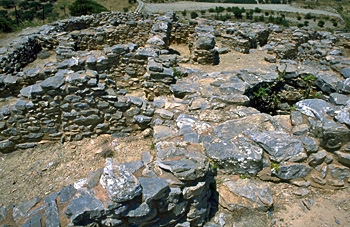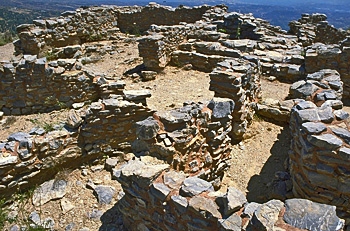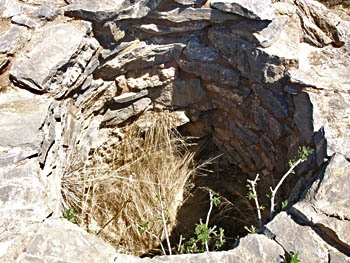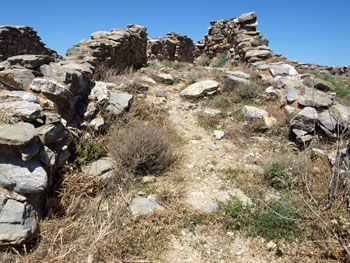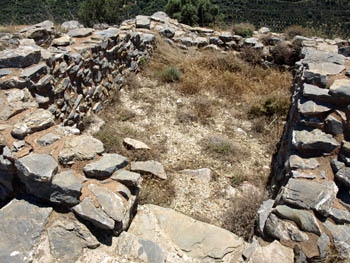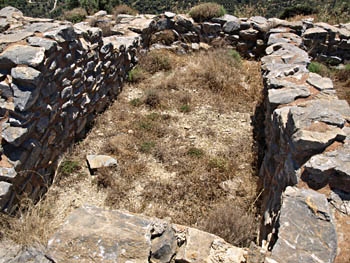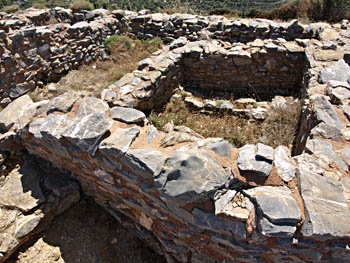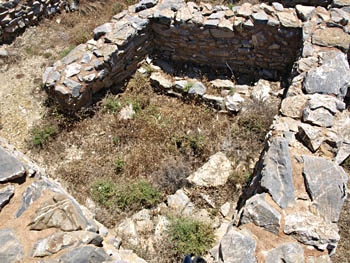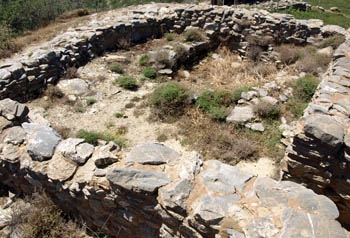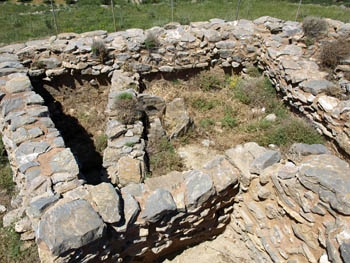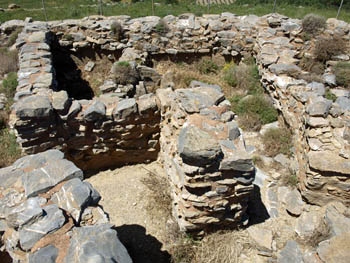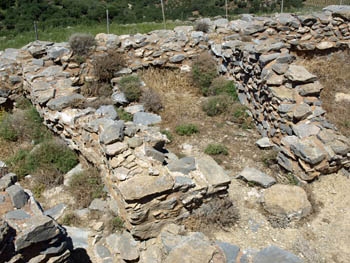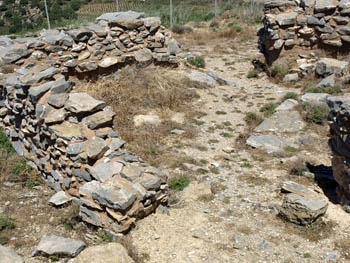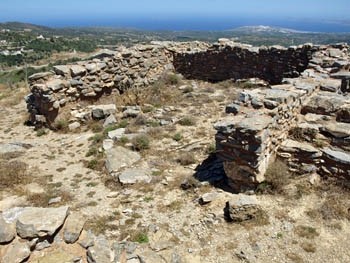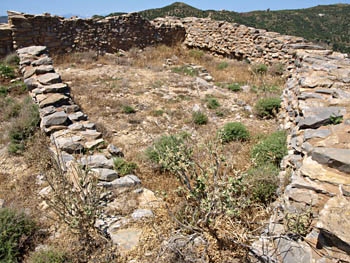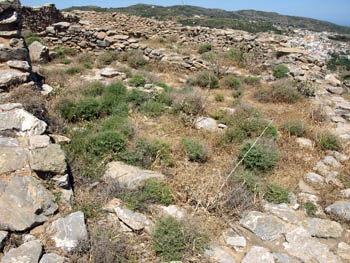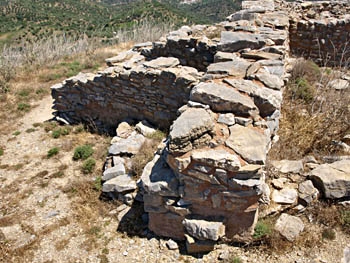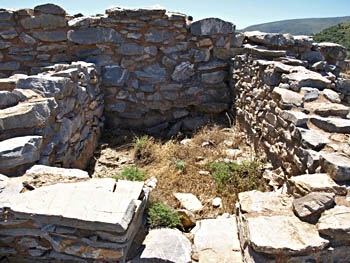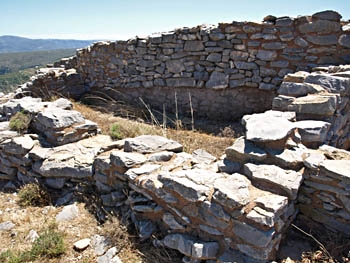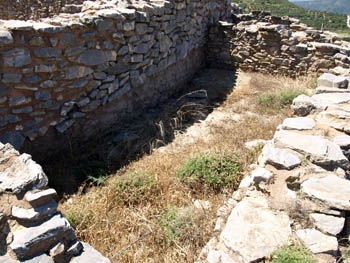Chamaizi is situated on the hill known as Souvloto Mouri, near the village of Chamaizi on the land route to eastern Crete. From the site, the modern town of Siteia can be seen in the distance. The very solid remains that can be seen on the site are from the Middle Minoan IA building, and it is unique because it is the only oval building so far discovered from the Minoan period.
Duncan McKenzie, who worked with Arthur Evans, suggested that the small round top of the hill dictated the oval shape of the building. However when the site was cleaned and investigated in 1971 it became clear that other, earlier buildings had existed on the site beyond the limits of the MM IA outer wall so that could not have been a deciding factor. Xanthoudides had noticed some of these structures and suggested that they might be either buttresses or Mycenean buildings. However, they are much earlier buildings, dating from three different periods in EM II, and since the later building followed their original shape it was doubtless this earlier design that is responsible for the oval building we see today.
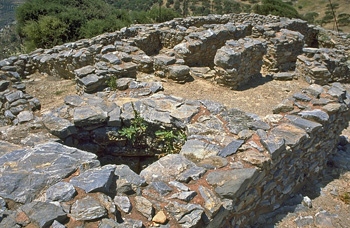
The cistern in the foreground and behind it to the right the courtyard that formed the centre of the complex
The Greek archaeologist Nikolaos Platon suggested that the building was a peak sanctuary. To support this view he pointed to the altar, an ash stratum and three figurines and the head of a fourth, all typical of figurines found in peak sanctuaries. He did not believe the object at the centre of the building was a well but saw it as a sacred rubbish pit.
Even though several more fragments of figurines were found in the 1971 excavation, the building cannot have been a peak sanctuary. No peak sanctuary on Crete has yielded up such a small number of artefacts as Chamaizi. Generally they produce hundreds of items. Not even the so-called sacred rubbish pit produced any significant finds which is not what one would expect. Moreover, the pottery that was found by Xanthoudides at Chamaizi was clearly domestic pottery. In 1971 new finds included fragments of pithoi and loomweights. Even the evidence of the ash stratum only pointed to the existence of a hearth in a room which may well have been a domestic shrine. Further investigation uncovered hearths and ash deposits in other parts of the building.
The well is in fact a cistern that had been dug into the rock in order to store water that fell from the roof. The building had an oval structure but it was open in the centre where the small courtyard and cistern are located.
The building at Chamaizi is most likely to have been the last of a series of houses dating back to the Early Minoan period that were built on this site. It has also been pointed out that, with the spectacular view over the Bay of Siteia, it would have made an excellent lookout post and it may have been one of a series built in the area, with the building at Ayia Photia constituting another.
Access
The site was originally excavated by Xanthoudides in 1903 and again by C. Davaras in 1971. Although fenced, the gate seems to be left permanently open so the site is open all year round. It is signposted from the main road, though it is not easy to find after that as the remaining signposts have rusted or disappeared. Once found, it is well worth a visit, both for the site itself and the spectacular views.
The photos below start with the well, followed by the east entrance. The rooms are then photographed in order (see ground plan) working in a clockwise direction starting with the first room to the south of the east entrance. Some of the rooms are photographed twice from different angles. Photographs chamaizi.13 and 15 show the western entrance to the complex. Photos 17, 19, 20 and 21 show the remains of structures outside the main circle.


